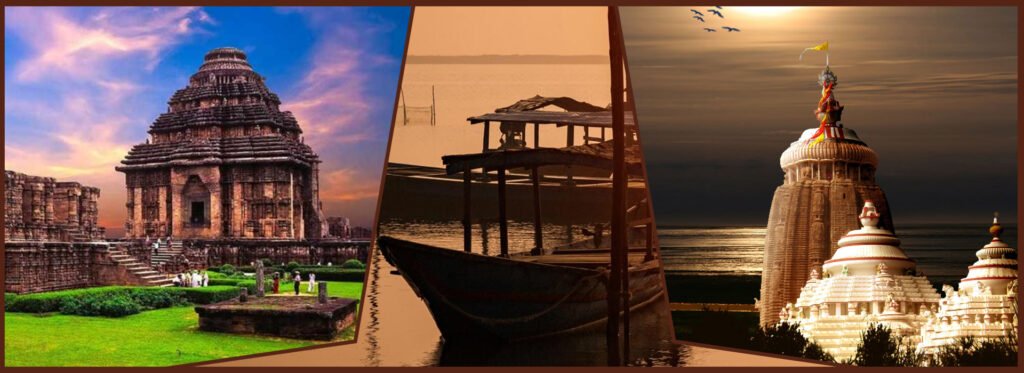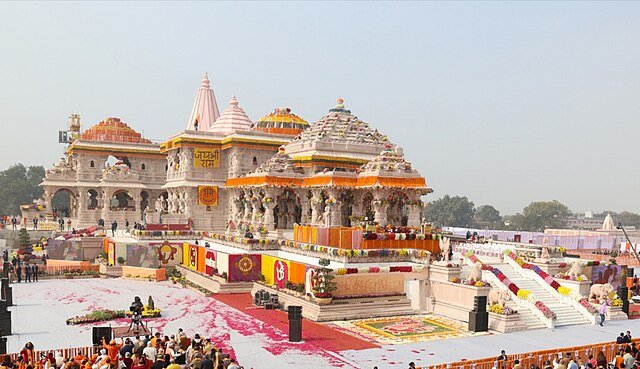
The Geography of Odisha ( intro )
Odisha, located on the eastern coast of India, is a state known for its rich cultural heritage, diverse landscapes, and historical significance. Formerly known as Orissa, it was officially renamed as Odisha in 2011. This coastal state is characterized by a unique blend of tradition and modernity, making it an intriguing destination for tourists and a dynamic region for economic development.
Here is an introductory overview of the geography of Odisha:
- Location: Odisha is situated on the eastern part of the Indian subcontinent, along the Bay of Bengal. It shares its borders with the states of West Bengal to the northeast, Jharkhand to the north, Chhattisgarh to the west, and Andhra Pradesh to the south.
- Capital and Major Cities: Bhubaneswar is the capital city of Odisha and serves as its administrative, economic, and cultural center. Other major cities in the state include Cuttack, Puri, Rourkela, and Sambalpur.
- Coastline: Odisha boasts a long coastline that stretches for approximately 480 kilometers along the Bay of Bengal. This coastal area is dotted with numerous beaches and coastal towns, making it a popular destination for beach lovers and tourists.
- Terrain: The geography of Odisha is diverse, with various topographical features. It includes a vast coastal plain, fertile river valleys, plateaus, and hill ranges. The Eastern Ghats, a series of low mountain ranges, run through the western part of the state.
- Rivers: Several major rivers flow through Odisha, including the Mahanadi, Brahmani, Baitarani, and Subarnarekha. These rivers play a crucial role in the state’s agriculture and provide water for irrigation.
- Climate: Odisha experiences a tropical climate with distinct wet and dry seasons. Summers (March to June) are hot and humid, while the monsoon season (June to September) brings heavy rainfall. Winters (October to February) are relatively cooler and more comfortable.
- Biodiversity: Odisha is home to a wide variety of flora and fauna. The state’s forests are inhabited by diverse wildlife species, including tigers, elephants, leopards, and various bird species. Notable wildlife sanctuaries and national parks in Odisha include Simlipal National Park, Bhitarkanika Wildlife Sanctuary, and Satkosia Gorge Sanctuary.
- Cultural Significance: Odisha has a rich cultural heritage with a strong emphasis on classical dance, music, and art. The state is famous for its classical dance forms like Odissi and its ancient temples, including the renowned Jagannath Temple in Puri.
- Economy: The economy of Odisha is diverse and includes sectors such as agriculture, mining, manufacturing, and services. The state is known for its mineral resources, particularly iron ore and coal, which have contributed significantly to its industrial development.
- Tourism: Odisha attracts tourists with its historical sites, religious pilgrimage destinations, pristine beaches, and natural beauty. The state’s cultural festivals, including the Rath Yatra in Puri, are famous nationwide and draw large crowds of visitors.
Odisha’s geography is characterized by its coastal location, diverse landscapes, and cultural richness. This state in eastern India offers a unique blend of tradition and modernity, making it a captivating destination for travelers and a region with immense potential for economic growth and development.
read about The best places to visit in Odisha | 12 best places
Geography of odisha
geography of odisha
The geography of Odisha, a state located on the eastern coast of India, is diverse and characterized by a range of geographical features, including coastline, plains, plateaus, hills, and river systems. Here is a more detailed look at the geography of Odisha:
- Location: Odisha is situated on the eastern part of the Indian subcontinent. It shares its borders with West Bengal to the northeast, Jharkhand to the north, Chhattisgarh to the west, and Andhra Pradesh to the south. To the east, it is bordered by the Bay of Bengal, which forms a long coastline along the state.
- Coastline: Odisha boasts a coastline that stretches for approximately 480 kilometers along the Bay of Bengal. This coastal area is known for its beautiful beaches, fishing villages, and important ports like Paradip.
- Terrain: The geography of Odisha is diverse. It includes:
- Coastal Plains: The eastern part of the state consists of fertile coastal plains, which are well-suited for agriculture. These plains are intersected by numerous rivers.
- River Valleys: Several major rivers flow through Odisha, including the Mahanadi, Brahmani, Baitarani, and Subarnarekha. These rivers and their tributaries play a vital role in the state’s agriculture, providing water for irrigation.
- Eastern Ghats: The western part of Odisha is dominated by the Eastern Ghats, a series of low mountain ranges. These hills and plateaus are rich in biodiversity and home to various tribal communities.
- Central Plateau: The central region of the state is characterized by a plateau landscape, with rolling hills and plateaus. It is an important agricultural region.
- Climate: Odisha experiences a tropical climate with distinct seasons:
- Summer: Summers (March to June) are hot and humid, with temperatures often exceeding 40°C (104°F) in some parts.
- Monsoon: The monsoon season (June to September) brings heavy rainfall, particularly along the coast and in the hilly areas. The southwest monsoon winds bring much-needed rain for agriculture.
- Winter: Winters (October to February) are relatively cooler and more pleasant, with temperatures ranging from 10°C to 30°C (50°F to 86°F).
- Biodiversity: Odisha is known for its rich biodiversity. Its forests are home to various wildlife species, including tigers, leopards, elephants, and a wide variety of bird species. The state has several protected areas and wildlife sanctuaries to conserve its natural heritage.
- Natural Resources: Odisha is rich in mineral resources, particularly iron ore, coal, and bauxite. These resources have contributed significantly to the state’s industrial development and economy.
- Cultural Significance: The state is renowned for its classical dance form called Odissi and is famous for its ancient temples, including the Jagannath Temple in Puri. These cultural and religious sites attract tourists from across the country and around the world.
- Economy: Odisha’s economy is diverse, with sectors such as agriculture, mining, manufacturing, and services playing important roles. Agriculture is a key livelihood for a significant portion of the population, while mining and industry contribute to the state’s revenue.
In summary, Odisha’s geography is marked by its coastal location, diverse landscapes, and significant natural resources. This diversity has shaped the state’s culture, economy, and way of life, making it a unique and historically rich region in India.
Geography of odisha study guide
Geography of odisha study guide
Here’s a study guide on the geography of Odisha with clear headings and subheadings, along with detailed explanations for each section:
Geography of Odisha Study Guide
1. Introduction to Odisha’s Geography
- Location: Odisha’s position on the eastern coast of India.
- Importance: Why understanding Odisha’s geography matters.
2. Coastal Geography
- Coastline: The length and significance of Odisha’s coastline along the Bay of Bengal.
- Coastal Features: Discuss notable coastal features, including beaches, ports, and fishing communities.
- Economic Impact: Explain how the coastline contributes to the state’s economy.
3. Terrain and Landforms
- Coastal Plains: Characteristics of the fertile coastal plains and their agricultural importance.
- River Valleys: Major rivers (e.g., Mahanadi) and their role in irrigation.
- Eastern Ghats: Features, significance, and biodiversity of the Eastern Ghats.
- Central Plateau: Describe the central plateau’s landscape and its agricultural significance.
4. River Systems
- Major Rivers: Name, describe, and explain the importance of key rivers.
- Dams and Reservoirs: Mention significant dams and reservoirs and their impact on water resources.
5. Climate and Seasons
- Climate Zones: Overview of Odisha’s climate.
- Seasons: Describe the distinct seasons (summer, monsoon, winter) and their characteristics.
- Monsoon Influence: Discuss how the southwest monsoon affects the state.
6. Biodiversity and Conservation
- Flora and Fauna: Discuss Odisha’s rich biodiversity, highlighting wildlife and plant species.
- Protected Areas: List and explain the significance of wildlife sanctuaries and national parks.
- Conservation Efforts: Mention initiatives for conserving biodiversity.
7. Natural Resources
- Mineral Resources: Identify and elaborate on the major mineral resources found in Odisha.
- Economic Contribution: Explain how these resources contribute to the state’s economy and industrial growth.
8. Cultural Significance
- Cultural Heritage: Highlight the cultural importance of Odisha, focusing on classical dance forms like Odissi.
- Religious Sites: Mention key temples and pilgrimage destinations.
9. Economy and Livelihoods
- Economic Sectors: Describe the various sectors of Odisha’s economy (agriculture, mining, manufacturing, services).
- Agriculture: Explain the role of agriculture in the livelihood of the population.
- Industrial Development: Discuss industrial growth driven by mining and manufacturing.
10. Tourism and Cultural Events
- Tourist Destinations: List popular tourist spots in Odisha, including historical sites, beaches, and festivals.
- Rath Yatra: Explain the significance of the Rath Yatra in Puri and other cultural events.
11. Notable Geographic Features
- Eastern Ghats: Detail the significance and characteristics of the Eastern Ghats.
- Chilika Lake: Describe the importance of Chilika Lake as a brackish water lagoon.
- Hirakud Dam: Explain the purpose and impact of the Hirakud Dam.
12. Geography and Society
- Influence on Lifestyle: Discuss how Odisha’s geography has shaped the lifestyle and culture of its people.
- Tribal Communities: Highlight the significance of tribal communities in the hill regions.
13. Environmental Challenges and Initiatives
- Environmental Issues: Identify and explain environmental challenges such as cyclones, flooding, and deforestation.
- Government Actions: Mention government initiatives for disaster preparedness and environmental conservation.
14. Recent Developments
- Infrastructure Projects: Provide information on recent geographical developments and infrastructure projects.
15. Conclusion
- Summary: Summarize the key points of Odisha’s geography and its profound impact on culture, economy, and environment.
Use this comprehensive study guide to gain a thorough understanding of Odisha’s geography, whether for academic purposes or personal knowledge.
Certainly! Here’s a study guide on the geography of Odisha presented in a table format for easy reference:
| Topic | Explanation |
|---|---|
| 1. Introduction to Odisha’s Geography | |
| – Location | Odisha’s position on the eastern coast of India. |
| – Importance | Why understanding Odisha’s geography matters. |
| 2. Coastal Geography | |
| – Coastline | Length and significance of Odisha’s coastline along the Bay of Bengal. |
| – Coastal Features | Notable coastal features, including beaches, ports, and fishing communities. |
| – Economic Impact | How the coastline contributes to the state’s economy. |
| 3. Terrain and Landforms | |
| – Coastal Plains | Characteristics of the fertile coastal plains and their agricultural importance. |
| – River Valleys | Major rivers (e.g., Mahanadi) and their role in irrigation. |
| – Eastern Ghats | Features, significance, and biodiversity of the Eastern Ghats. |
| – Central Plateau | Description of the central plateau’s landscape and its agricultural significance. |
| 4. River Systems | |
| – Major Rivers | Name, describe, and explain the importance of key rivers. |
| – Dams and Reservoirs | Mention significant dams and reservoirs and their impact on water resources. |
| 5. Climate and Seasons | |
| – Climate Zones | Overview of Odisha’s climate. |
| – Seasons | Distinct seasons (summer, monsoon, winter) and their characteristics. |
| – Monsoon Influence | How the southwest monsoon affects the state. |
| 6. Biodiversity and Conservation | |
| – Flora and Fauna | Discussion of Odisha’s rich biodiversity, highlighting wildlife and plant species. |
| – Protected Areas | List and explain the significance of wildlife sanctuaries and national parks. |
| – Conservation Efforts | Mention initiatives for conserving biodiversity. |
| 7. Natural Resources | |
| – Mineral Resources | Identification and elaboration of major mineral resources found in Odisha. |
| – Economic Contribution | Explanation of how these resources contribute to the state’s economy and industrial growth. |
| 8. Cultural Significance | |
| – Cultural Heritage | Highlighting the cultural importance of Odisha, focusing on classical dance forms like Odissi. |
| – Religious Sites | Mentioning key temples and pilgrimage destinations. |
| 9. Economy and Livelihoods | |
| – Economic Sectors | Description of various sectors of Odisha’s economy (agriculture, mining, manufacturing, services). |
| – Agriculture | Explanation of the role of agriculture in the livelihood of the population. |
| – Industrial Development | Discussion of industrial growth driven by mining and manufacturing. |
| 10. Tourism and Cultural Events | |
| – Tourist Destinations | Listing popular tourist spots in Odisha, including historical sites, beaches, and festivals. |
| – Rath Yatra | Explanation of the significance of the Rath Yatra in Puri and other cultural events. |
| 11. Notable Geographic Features | |
| – Eastern Ghats | Detailing the significance and characteristics of the Eastern Ghats. |
| – Chilika Lake | Describing the importance of Chilika Lake as a brackish water lagoon. |
| – Hirakud Dam | Explaining the purpose and impact of the Hirakud Dam. |
| 12. Geography and Society | |
| – Influence on Lifestyle | Discussion of how Odisha’s geography has shaped the lifestyle and culture of its people. |
| – Tribal Communities | Highlighting the significance of tribal communities in the hill regions. |
| 13. Environmental Challenges and Initiatives | |
| – Environmental Issues | Identification and explanation of environmental challenges such as cyclones, flooding, and deforestation. |
| – Government Actions | Mentioning government initiatives for disaster preparedness and environmental conservation. |
| 14. Recent Developments | |
| – Infrastructure Projects | Providing information on recent geographical developments and infrastructure projects. |
| 15. Conclusion | |
| – Summary | Summarizing the key points of Odisha’s geography and its profound impact on culture, economy, and environment. |
Feel free to use this table-based study guide for a quick and organized reference to the geography of Odisha.
Geography of odisha best 20 facts
Geography of odisha best 20 facts
Here are 20 interesting facts about the geography of Odisha:
- Coastline: Odisha has one of the longest coastlines among Indian states, stretching approximately 480 kilometers along the Bay of Bengal.
- Eastern Ghats: The Eastern Ghats, a range of low mountains and plateaus, run through the western part of the state and are known for their rich biodiversity.
- Chilika Lake: Chilika Lake in Odisha is the largest coastal lagoon in India and the second-largest in the world. It’s a vital habitat for migratory birds and marine life.
- Tribal Diversity: Odisha is home to a diverse range of tribal communities, especially in the hilly and forested areas of the state.
- Jagannath Temple: The Jagannath Temple in Puri is one of the Char Dham pilgrimage sites in India and is famous for its annual Rath Yatra.
- Mineral Resources: Odisha is rich in mineral resources, particularly iron ore, coal, and bauxite, making it a significant contributor to India’s mineral production.
- Simlipal National Park: Located in the Mayurbhanj district, Simlipal National Park is one of India’s most important tiger reserves and a UNESCO Biosphere Reserve.
- Hirakud Dam: The Hirakud Dam on the Mahanadi River is one of the longest dams in the world and a major source of irrigation and hydroelectric power.
- Rath Yatra: The annual Rath Yatra in Puri is a grand chariot festival where Lord Jagannath, along with his siblings, is taken on a procession.
- Odissi Dance: Odissi is a classical dance form that originated in Odisha and is known for its graceful and expressive movements.
- Languages: Odia is the official language of Odisha. Other languages spoken include tribal dialects and English.
- Cyclone-Prone: Odisha is prone to cyclones due to its coastal location. It has faced significant cyclones in its history, leading to robust disaster preparedness measures.
- Lingaraja Temple: The Lingaraja Temple in Bhubaneswar is one of the most prominent temples dedicated to Lord Shiva, known for its architectural grandeur.
- Wildlife Sanctuaries: Odisha has several wildlife sanctuaries and national parks, including Bhitarkanika Wildlife Sanctuary, known for its mangrove forests and saltwater crocodiles.
- Puri Beach: Puri Beach is a popular tourist destination known for its golden sands and vibrant beach culture.
- Bhubaneswar: Bhubaneswar, the capital city of Odisha, is often referred to as the “Temple City of India” due to its numerous ancient temples.
- Konark Sun Temple: The Konark Sun Temple, a UNESCO World Heritage Site, is renowned for its intricate architecture and the chariot-shaped temple dedicated to the sun god.
- Rourkela Steel Plant: Rourkela in Odisha is home to one of India’s largest steel plants, contributing significantly to the country’s steel production.
- Agriculture: The state’s agriculture is characterized by the cultivation of rice, pulses, oilseeds, and cash crops like cotton and jute.
- Historical Significance: Odisha has a rich history dating back to ancient times and has been mentioned in texts like the Mahabharata and the Ashokan inscriptions.
These facts showcase the geographical diversity and cultural richness of Odisha, making it a unique and historically significant state in India.
Conclusion
In conclusion, the geography of Odisha is a captivating tapestry of diverse landscapes, cultural heritage, and environmental significance. This eastern coastal state of India has much to offer, from its extensive coastline along the Bay of Bengal to the rolling plains, plateaus, and the striking presence of the Eastern Ghats in its western region.
The coastal plains of Odisha not only provide fertile grounds for agriculture but also host bustling ports and fishing communities, contributing significantly to the state’s economy. Chilika Lake, one of the largest coastal lagoons in the world, adds to the natural beauty of the coastline while serving as a crucial habitat for a wide variety of wildlife.
The Eastern Ghats, with their low mountains and plateaus, are a treasure trove of biodiversity. They are home to numerous tribal communities that have thrived in harmony with nature for centuries. Simlipal National Park, nestled in these hills, stands as a testament to Odisha’s commitment to wildlife conservation.
Odisha’s rivers, notably the Mahanadi, Brahmani, and Baitarani, play a vital role in supporting agriculture through irrigation. The state’s dams and reservoirs, like the Hirakud Dam, further harness water resources for irrigation and power generation.
Culturally, Odisha is renowned for its classical dance form, Odissi, and its ancient temples, most notably the Jagannath Temple in Puri. These cultural treasures attract pilgrims and tourists alike, contributing to the state’s vibrant tourism industry.
However, Odisha’s geography also presents challenges. Its coastal location makes it susceptible to cyclones and flooding, necessitating robust disaster management measures. The state’s rich mineral resources have fueled industrial development but also raised concerns about sustainable resource management.
In summary, Odisha’s geography is a dynamic interplay of natural beauty, cultural heritage, and economic opportunities. Its diverse terrain, from coast to plateau to hills, fosters a rich tapestry of life and traditions. As Odisha continues to evolve, it is vital to strike a balance between development and conservation to ensure the continued prosperity and environmental health of this unique Indian state.
FAQs
Here are some frequently asked questions (FAQs) about the geography of Odisha, along with concise answers:
1. Where is Odisha located?
- Odisha is located on the eastern coast of India, along the Bay of Bengal.
2. What is the significance of Odisha’s coastline?
- Odisha has a long coastline of approximately 480 kilometers, which supports fishing, ports, and tourism, contributing significantly to the state’s economy.
3. What are the major geographical regions in Odisha?
- Odisha consists of coastal plains, river valleys, plateaus, and the Eastern Ghats, each with its unique characteristics and significance.
4. Which is the largest coastal lagoon in India, and where is it located in Odisha?
- Chilika Lake, located in Odisha, is the largest coastal lagoon in India and the second-largest in the world. It is known for its biodiversity.
5. What is the Eastern Ghats, and where is it located in Odisha?
- The Eastern Ghats are a range of low mountains and plateaus located in the western part of Odisha. They are known for their rich biodiversity and tribal communities.
6. What is the Hirakud Dam, and what is its significance?
- The Hirakud Dam, built on the Mahanadi River, is one of the longest dams in the world. It serves as a major source of irrigation and hydroelectric power in Odisha.
7. What is the Rath Yatra, and where does it take place in Odisha?
- The Rath Yatra is an annual chariot festival in which the deities of Lord Jagannath, along with his siblings, are taken on a grand procession in Puri, Odisha.
8. What is Odissi, and why is it significant in Odisha?
- Odissi is a classical dance form that originated in Odisha. It is known for its graceful and expressive movements and plays a significant role in the state’s cultural heritage.
9. What are some major mineral resources found in Odisha?
- Odisha is rich in mineral resources, including iron ore, coal, bauxite, and manganese, which are essential for its industrial development.
10. How does the monsoon season affect Odisha? – The monsoon season (June to September) brings heavy rainfall to Odisha, replenishing water resources and supporting agriculture. However, it also leads to flooding and cyclones.
11. What are some popular tourist destinations in Odisha? – Odisha offers numerous tourist destinations, including the Jagannath Temple in Puri, Konark Sun Temple, Simlipal National Park, and the historic city of Bhubaneswar.
12. How does Odisha prepare for cyclones and disasters due to its coastal location? – Odisha has implemented robust disaster management strategies, including early warning systems, evacuation plans, and cyclone shelters, to mitigate the impact of cyclones and floods.
13. What role do tribal communities play in Odisha’s geography and culture? – Tribal communities inhabit the hilly and forested areas of Odisha, contributing to the state’s rich cultural diversity and traditional knowledge of the environment.
14. Which languages are spoken in Odisha? – Odia is the official language of Odisha, but tribal dialects and English are also commonly spoken.
15. What is the cultural significance of the Lingaraja Temple in Bhubaneswar? – The Lingaraja Temple is one of the most prominent temples dedicated to Lord Shiva and is known for its architectural grandeur and cultural importance in Bhubaneswar.
These FAQs provide a brief overview of key aspects of Odisha’s geography and culture, offering a starting point for understanding this diverse and vibrant state in India.
also read The Cuisine of Odisha😍






